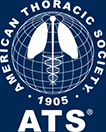So How Do I Implement Monoclonal Antibody Therapy in My Practice: The Financial Consequences?
Reynold A. Panettieri, Jr., MD and Bradley E. Chipps, MD
Contemporary approaches to managing lung disease incorporate biologics as key agents in improving lung health. Using severe persistent asthma as an example, the availability of omalizumab has markedly impacted clinical outcomes. Despite 13 years’ experience with omalizumab and compared to allergists, the use of biological agents by pulmonologists remains challenging. Several reasons may contribute to this disparity: apart from intrinsic differences in patients seeking allergy or pulmonary expertise, the pulmonologist practice sites rarely deliver parenteral therapy and familiarity with billing practices may be an obstacle. With the dramatic increase in new biologic agents such as mepolizumab and reslizumab to manage severe persistent asthma (in the near future another five agents will likely be approved), pulmonologists need to incorporate biologic agents in their therapeutic algorithms. In contrast, oncologists, nephrologists and others have far greater experience in prescribing biologics (1-4). To address the financial challenges that face practices implementing biological therapy, this brief review describes current obstacles and approaches.
The delivery of biologics to outpatients has generated controversy over the optimal approaches that are cost effective and offer the greatest accessibility (1,2). Three approaches that were initially developed to meet the needs of oncology include: buy-and-bill, white-bagging, and specialty pharmacy. Typically, physician-administered drugs and biologics are purchased by the practice, and the products are billed to the payers under a medical benefit through buy-and-bill. Practices are usually reimbursed at the manufacturer’s average selling price plus a percentage. White-bagging occurs when specialty pharmacy distributors dispense the medication to the patient but ships it to the provider for administration. The specialty pharmacy distributor obtains reimbursement from the payer for the drug. The physician neither buys nor bills for the drug but is paid a drug administration fee. Alternatively, specialty pharmacies dispense biologics and offer clinical services including patient education and therapy/adherence approaches for biologics. Specialty pharmacies dispense these medications and receive reimbursement from payers, but these specialty pharmacies are not specialty pharmacy distributors. There are advantages and disadvantages to the three models. Importantly, the administration of a biologic by the practitioner provides direct evidence of adherence and continuity of care that differs from administration in a specialty pharmacy (1). In the pulmonary field, most providers are unfamiliar with the three approaches.
Given the cost of biological agents, payers require preauthorization for most, if not all, patients. Payers vary on their approaches to approval of biologics. Qualifying criteria are established and most pharmaceutical manufacturers provide assistance in navigating the pre-authorization process. Medicare patients who are prescribed a biologic do not require pre-authorization. Authorization, however, may be required from a secondary insurance, and that benefit must be clearly defined before the practitioner orders the drug from the specialty pharmacy distributor. Typically for pulmonary-focused biologics, once payer approval is secured there are two models to access the medication. Traditionally, the patient is billed a copay and the drug is shipped to the provider for administration (white-bagging) or administered at a specialty pharmacy or infusion center. Accordingly, the practice incurs little financial risk other than the practice time for reconstitution, drug administration and for the requisite patient observation time to assess adverse effects (typically 30-60min).
In other instances, the payer may use the buy-and-bill model that requires the practice to purchase the drug and then bill the payer after administration. Financially, the practice incurs an upfront cost that is reimbursable, but this approach may be unfamiliar to pulmonologists and pose challenges. Buy and- bill orders generally have 90 to 120 days for repayment to the specialty pharmacy, allowing time to collect the amount due from the primary payer. It is important that a thorough benefit analysis be completed before any transactions are undertaken. Plausibly, practices will secure some additional income over the obligated cost of the drug, but this is minimal.
The future of novel therapeutic approaches to manage lung disease will include the robust use of biologics. In our field, it will be imperative to become familiar with these approaches which will offer our patients the optimal current and effective approaches to promote lung health.
References
- Boekell DD. The evolving Use of White Bagging in Oncology. www.kantarhealth.com April, 2014. p1-11.
- Polite B, Conti RM, Ward JC. Reform of the Buyand- Bill System for Outpatient Chemotherapy Care Is Inevitable: Perspectives from an Economist, a Realpolitik, and an Oncologist. Am Soc Clin Oncol Educ Book. 2015:e75-80.
- Dinour LM. Conflict and compromise in public health policy: analysis of changes made to five competitive food legislative proposals prior to adoption. Health Educ Behav. 2015 Apr;42(1 Suppl):76S-86S. doi: 10.1177/1090198114568303.
- Polite BN, Ward JC, Cox JV, Morton RF, Hennessy J, Page RD, Conti RM. Payment for oncolytics in the United States: a history of buy and bill and proposals for reform.
J Oncol Pract. 2014 Nov;10(6):357-62. doi: 10.1200/ JOP.2014.001958.
Reynold A. Panettieri, Jr., MD, is Professor of Medicine at the Robert Wood Johnson Medical School, and Vice Chancellor for Translational Medicine and Science at Rutgers, The State University of New Jersey. Bradley Chipps, MD, is a practicing physician at the Capital Allergy and Respiratory Disease Center in Sacramento, CA.


